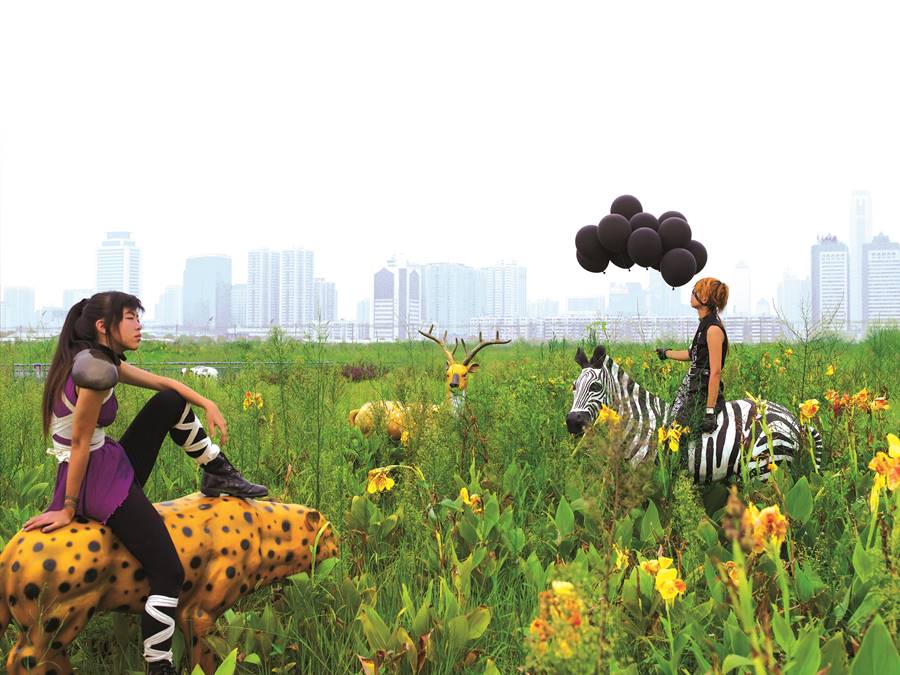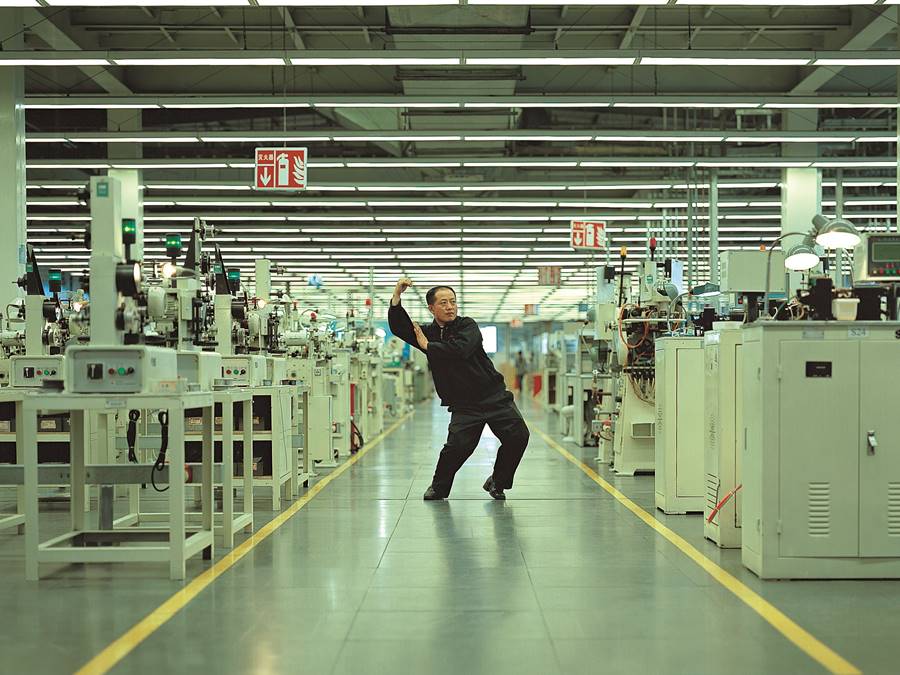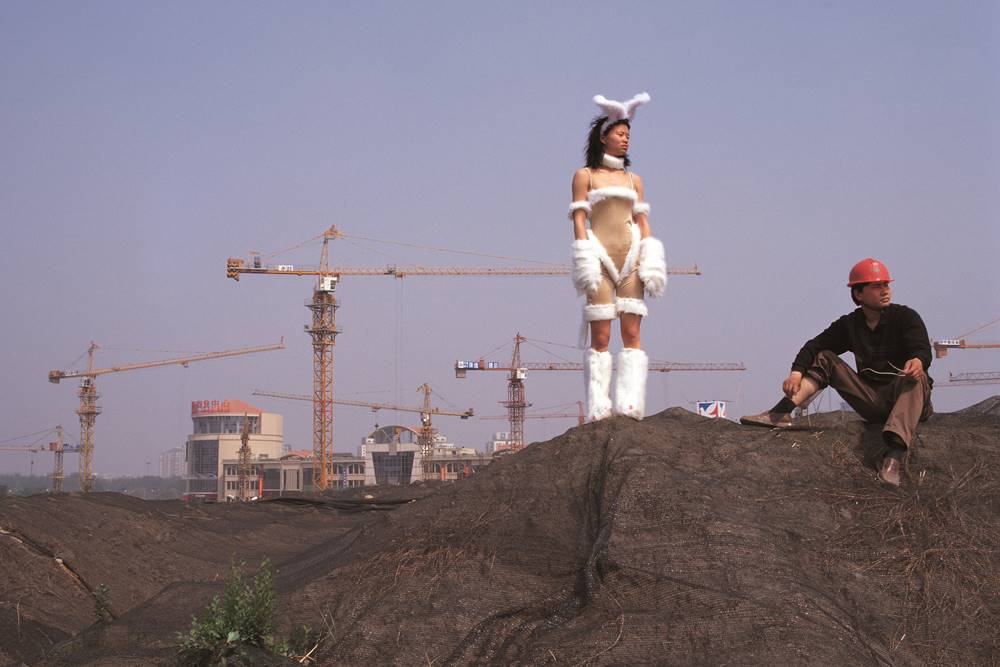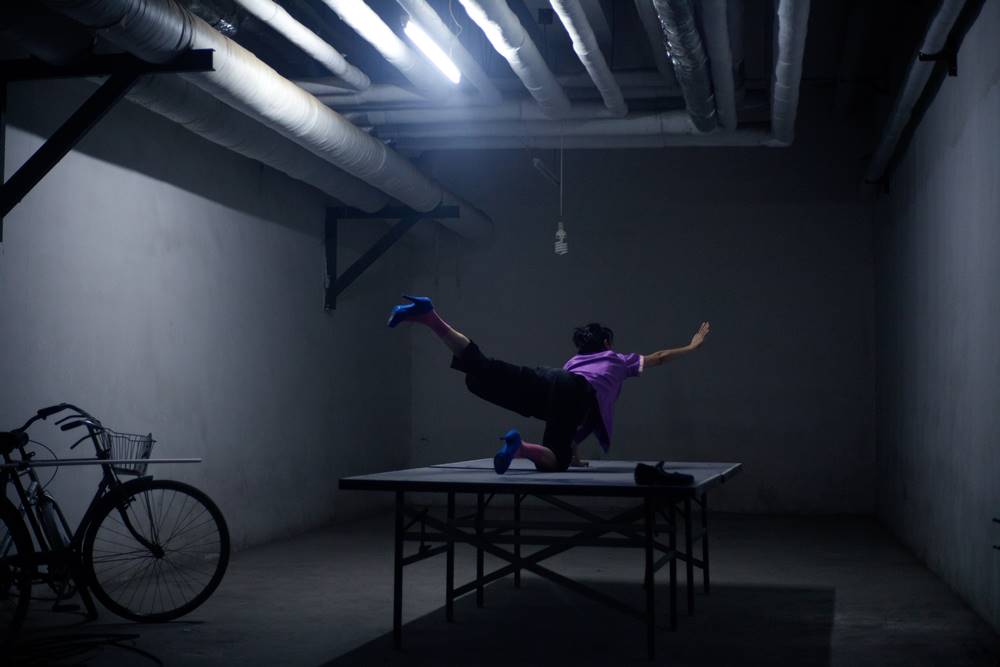Art & Exhibitions
Cao Fei Tackles the Numbing State of Modernity in Her Solo Show at MoMA PS1
In her work, escapism is a coping mechanism.

Image: Courtesy of artist and Vitamin Creative Space.
In her work, escapism is a coping mechanism.

Kathleen Massara

When people in New York talk about Cao Fei, it’s usually in terms of her identity. She’s Chinese. She’s from an industrial city. And she’s living in a country governed by communism, or at least whatever of it remains in the People’s Republic. All these things are true, but this is not the point. The 38-year-old Beijing-based, Guangzhou-born artist’s concerns aren’t localized—she tackles an internally relevant topic: the numbing state of modernity in the era of globalization. Her upcoming show at MoMA PS1 in Queens will be the first museum solo exhibition for the artist, and it is an ambitious one, involving multiple media, and identities.
In her 2004 work COSPlayers, for instance, Cao immersed herself in a community of anime devotees in her hometown, observing how the fans dressed as idealized characters from Japanese movies and comics amid a jarring industrial backdrop. Three years later, she developed the character China Tracy, an avatar in the role-playing game Second Life, for RMB City, which presents a futuristic Chinese city in the middle of the ocean. And in her 2006 video Whose Utopia?, the artist enlists lighting factory workers to present strange and wonderful fantasy lives under florescent lights and Taylorist machine set-ups.

Cao Fei, Whose Utopia (2006).
Image: Courtesy of artist and Vitamin Creative Space.
“When it comes to alienation, this is not a temporary reaction,” she writes in an email to artnet News, “it is a continuous, long, and gradual process. We are in the stalemate. The highest grossing Disney animated film Frozen—that’s what we present [as] a perfect description of the times.”
This alienation is only becoming more evident as technology advances, and retreats, at a rapid pace. Microsoft’s fun teen chat bot, Tay, aka “AI Experiment Fail,” was unleashed on the public March 23, and was taken out of commission the same day, after trolls taught the artifically intelligent being how to post racist garbage online. Cao is more interested in how we create utopian situations on and offline, however. She notes that when she created RMB City in Second Life, she wanted it “without impurities and conflict.” But “now is the era of VR, augmented reality,” she writes, “and the ‘virtual world’ cannot satisfy people’s senses anymore.”
“There’s this idea of resisting the circumstances of the everyday through this immersion in a fantasy life,” says Jocelyn Miller, assistant curator at MoMA PS1, in a phone interview with artnet News.
Capturing cosplayers in their element is just one example of this process of moving beyond the drudgery and circumscription of our daily lives. In Mangatopia: Essays on Manga and Anime in the Modern World, Frenchy Lunning speaks of cosplay as “therapeutic,” and quotes Gary Genosko as stating that it is “radically open.”
Cao’s work echoes these sentiments, as she drills down into the muck of everyday life, going beyond what is expected in the current contemporary art conversation. “Art works [are] getting weak, [and] cannot grasp our real feeling anymore,” she writes. “Universal Studios theme park seems to be more perfect than all the immersive art works.”

Cao Fei, Un-Cosplayer Series: Bunny’s World (2004).
Image: Courtesy of artist and Vitamin Creative Space.
There are numerous ways to cope, and to escape, as Cao teaches us time and time again. This weekend at MoMA PS1’s Sunday Sessions, the artist will perform Straight out of Times with the New York-based Asian American rap group Notorious MSG. She first came across their music in 2006, and they quickly ended up in her video work Hip Hop: New York, which appeared at Lombard Freid Gallery in New York that same year.
“They carry themselves with a gangster sensibility, born out of the lower echelons of society, or built from the alternative cultural imagination of Chinatown itself,” Cao writes. “Chinatowns give rise to modalities of social organization not quite the same as the mainstream order of their ‘host’ countries. They run according to an underground order, providing a safe haven for Chinese and other similarly situated immigrants as well as the disadvantaged generally. Out of this grows a kind of resistant power.”

Cao Fei, Haze and Fog image still (2013).
Image: Courtesy of artist and Vitamin Creative Space.
This “resistant power” is what drives Cao’s work, whether she’s immersing herself in cosplay, or hip hop, communities. For the artist, there is always a way out, even if it is an imaginary one.